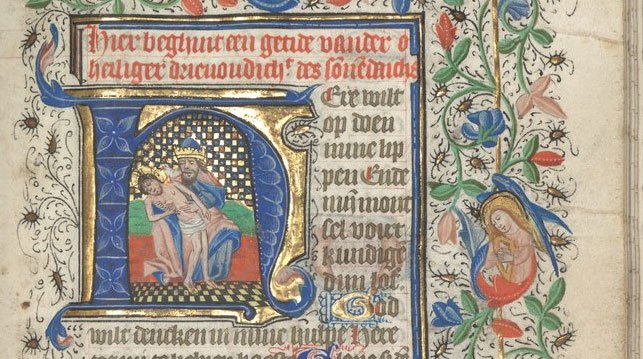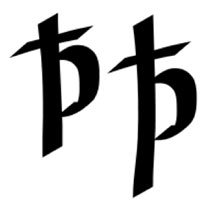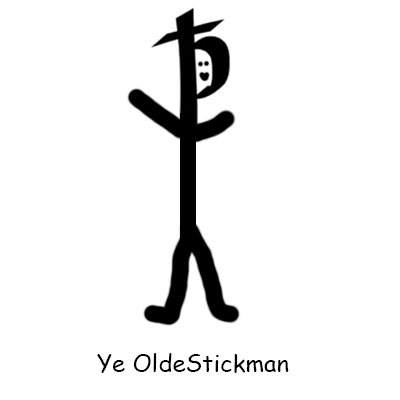
For whatever reason, sometimes you want to have characters speak in that pseudo- biblical/Shakespearean English of thee and thou and shalt. Before we get into the most popular of these words and a guide to using them correctly, let’s make one thing clear: no one ever actually spoke like this:
Thou art beautiful, like the sun and moon. I loveth thee with all
that is mine own.
This is Modern English with some old-timey words thrown in. In fact, there is no such thing as “Olde English” in history. The language being aped here is Early Modern English (the English of the King James Bible scribes, Shakespeare, Milton, and the rest of the seventeenth-century-ish crowd), but it’s really inaccurate. Here’s a bit of Milton’s original text of Paradise Lost:
So spake th’ Apostate Angel, though in pain,
Vaunting aloud, but rackt with deep despare:
And him thus answer’d soon his bold Compeer
And a bit of the King James Bible, not revised:
And the earth brought foorth grasse, and herbe yeelding seed
after his kinde, and the tree yeelding fruit, whose seed was in it
selfe, after his kinde: and God saw that it was good. (Gen. 1:12)
It gets a bit more modern when you update the spelling, but it’s still not structured or punctuated in the language we speak now.
Get a free sample proofread and edit for your English.
Two professional proofreaders will proofread and edit your English.
So, yes, “Olde English” is all made up, but the individual words themselves did exist in general conversation, and they do come with grammar rules.
Thou vs. Thee
You can’t just throw these into a sentence. Thouis for the subject of the sentence (along with I, we, and they), and thee is for the object (along with me, us, and them).
Thou complaineth constantly.
I will give thee a hiding.
Additionally, thy works like thou, never like thee. So:
Thy shalt rue the day. (correct)
I will give this to thy. (incorrect)
Thyn (Old English), thyne (Middle English), and thine(current spelling) are all “your.”
To thine own self be true. (correct)
Thine is the power over the land and sea. (correct)
I will see thine die. (incorrect)
Verbs and Their Wacky Endings
Thou shalt die.
The Lord giveth, and the Lord taketh away.
Thou art a scoundrel.
Dost thou love me?
Doth thou love me?
In English’s first centuries, spelling was pretty much all over the place. The language, after all, is a commerce-driven amalgam of Latin, Greek, German, French, Spanish, Yiddish, and—who knows? Maybe there’s some Martian in there too. These various verb endings do not alter their definitions. Shalt and shall mean the exact same thing.
What’s important with these is not the meaning but the tense. Shalt is in future tense. Giveth, doth, dost, and art are in present tense.
Thus, the line from The Avengers is correct: “Doth Mother know you weareth her drapes?” Good on you, Tony Stark.
Unto
Ah, the good ol(d)e “Do unto others.” Unto just means to.
Belov’d vs. Beloved
Now, this is a fun one. The ways it gets misused—well, it’s pretty much always misused because it’s only relevant when you’re worrying about poetic meter. The apostrophe is a pronunciation guide. Belov’d is two syllables: be-loved. Beloved is (or used to be) three syllables: be-lov-ed. Let’s go back to the Bard for a demonstration:
’tis a consummation
Devoutly to be wish’d. To die, to sleep; (Hamlet 3.1)
All that “wish’d” thing is for is to make sure it’s one syllable to fit the iambic (unstressed/stressed) pentameter (five iambs):
deVOUTly TO be WISH’D. to DIE, to SLEEP
Today, we don’t say “wish-ed,” so “wish’d” serves no purpose even in poetry.
Ye vs. The
This is also a fun one. While ye was used all the time for you (both as subject and as object), it was never, in fact, used for theuntil the Victorians thought it was cute to have signs that read Ye Olde-Timey Inn.
Get a free sample proofread and edit for your English.
Two professional proofreaders will proofread and edit your English.
The mistake comes from what’s called a thorn. It’s one of those letters that didn’t make it into Modern English. Old English, Old Norse, Gothic, and Icelandic use it basically for “th.” It has a few shapes, many of them looking like a Y, but this is the idea:

Modern keyboards type it as þ. When in old tapestries, paintings, and drawings there was a sign reading þ Old Inn, this was simply The Old Inn. But Victorians read it as Ye Old Inn.

So, while the crumpets and scones you get from Ye Olde Bake Shoppe may taste authentic, the sign is not.
Julia H.
Get a free sample proofread and edit for your document.
Two professional proofreaders will proofread and edit your document.
We will get your free sample back in three to six hours!